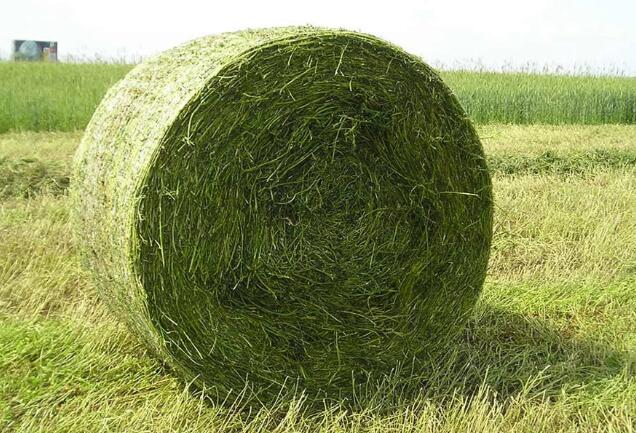
Ancient farmers discovered that by wrapping green plants tightly and burying them in a pit or mound, they could create a source of nutritious and tasty food all winter long. Combined with modern technology, we found that the essence is that plants preserve and enhance their nutritional content through the fermentation of lactic acid bacteria.
Silage production begins with harvest. Forage crops, usually grass or corn, are cut when their nutritional value is highest. The harvested forage is then cut into small pieces to increase the contact area for lactic acid bacteria. The chopped forage is packed tightly into bales of fixed size. Wrapping the bale tightly ensures minimal oxygen is present, as oxygen is the enemy of fermentation. Today, many farmers use stretch wrapping technology, which eliminates the need to build silos required for silage storage.
Nutritional Advantages of Silage
During the fermentation process, the silage is preserved by wrapping it with stretch wrap, and its nutritional content is enhanced. The lactic acid produced during this process helps break down complex carbohydrates into simpler, more digestible forms. This makes the nutrients in the silage more accessible to animals eating the silage.
- Higher nutrient retention;
The fermentation process preserves the silage, locking in essential nutrients such as protein, vitamins and minerals. This means that when livestock eat silage, they receive a more concentrated dose of nutrients compared to hay. - Improve digestibility;
The lower pH of silage and the breakdown of complex carbohydrates improve digestibility. Livestock can absorb and utilize nutrients more efficiently, promoting better growth and health. - Reduce waste;
Unlike hay, silage is cut into small pieces that are less likely to fall apart or be trampled by livestock. While this is done primarily to aid the fermentation process, it also reduces waste. More feed ends up in the animal’s belly, resulting in cost savings. - Consistency;
Silage provides consistent nutritional content year-round. In contrast, hay quality can vary based on factors such as weather and harvest time, making it difficult to consistently meet the dietary needs of livestock. - Reduce harvesting costs;
Harvesting silage requires less expense than drying and baling hay. You don’t have to wait for perfect weather conditions to efficiently use machinery to chop and package forage. - Reduce labor costs;
Silage production is highly mechanized, reducing the need for manual labor during harvest. This means lower labor costs and less reliance on seasonal labor.
Today, technology really helps people to do things easier. The automatic roll wrapping machine is capable to complete the stretch wrapping of big round silage bales in a short time. The machine has two supportive rollers to rotate the round bales and make a full-side wrapping automatically. It saves a lot of time compare with manual wrapping and the final package is much tighter and nicer.

